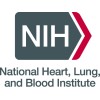Hostility and Pathogenic Mechanisms of Coronary Heart Disease in Women
Primary Purpose
Cardiovascular Diseases, Coronary Disease, Heart Diseases
Status
Completed
Phase
Locations
Study Type
Observational
Intervention
Sponsored by

About this trial
This is an observational trial for Cardiovascular Diseases
Eligibility Criteria
No eligibility criteria
Sites / Locations
Outcomes
Primary Outcome Measures
Secondary Outcome Measures
Full Information
NCT ID
NCT00005435
First Posted
May 25, 2000
Last Updated
February 17, 2016
Sponsor
National Heart, Lung, and Blood Institute (NHLBI)
1. Study Identification
Unique Protocol Identification Number
NCT00005435
Brief Title
Hostility and Pathogenic Mechanisms of Coronary Heart Disease in Women
Study Type
Observational
2. Study Status
Record Verification Date
June 2000
Overall Recruitment Status
Completed
Study Start Date
July 1991 (undefined)
Primary Completion Date
undefined (undefined)
Study Completion Date
June 1997 (Actual)
3. Sponsor/Collaborators
Name of the Sponsor
National Heart, Lung, and Blood Institute (NHLBI)
4. Oversight
5. Study Description
Brief Summary
To determine the combined effects of hostility, harassment, lipids, and oral contraceptive (0C) use on physiological responses in young and middle-aged premenopausal women.
Detailed Description
BACKGROUND:
Preliminary findings already have shown that, in contrast to women with low scores on the Cook and Medley Hostility (Ho) scale, women with high Ho scores exhibit greater cardiovascular changes to harassment. Additional findings have suggested that oral contraceptive (0C) use may also be associated with increased behaviorally-induced physiological changes, especially in low Ho women. Similarly, higher levels of total serum cholesterol (TSC) have been positively associated with greater stress-induced neurohormonal changes in middle-aged men with high Ho scores.
DESIGN NARRATIVE:
Assessment of autonomic activity took place in the laboratory and during a 24 hour ambulatory measurement period. Hostility was measured with the Cook and Medley Hostility scale. The laboratory assessment helped to determine if high hostility women responded to harassment with greater cardiovascular and neurohormonal changes than low hostility women, and if this relationship was altered by 0C use, lipids, and age. The ambulatory assessment of autonomic activity allowed an exploration of the responses of high and low hostility subjects to daily-life stressors. Several hypothesis were explored: 1) Did harassment produce neuroendocrine as well as cardiovascular hyperreactivity in young women, and did this hyperreactivity generalize from laboratory to real-life? 2) Were the harassment-induced cardiovascular and neuroendocrine changes in young women also present in middle-aged women? 3) To what extent did 0C use modulate the cardiovascular and neuroendocrine responses to harassment in young women, and was 0C use also altering the hostility--related associations between lipids and reactivity? 4) Were the differential lipid-reactivity associations observed in middle-aged men as a function of high and low hostility scores present in women, and, if so, were they modulated by age?
The study completion date listed in this record was obtained from the "End Date" entered in the Protocol Registration and Results System (PRS) record.
6. Conditions and Keywords
Primary Disease or Condition Being Studied in the Trial, or the Focus of the Study
Cardiovascular Diseases, Coronary Disease, Heart Diseases
7. Study Design
10. Eligibility
Sex
Male
Maximum Age & Unit of Time
100 Years
Accepts Healthy Volunteers
No
Eligibility Criteria
No eligibility criteria
12. IPD Sharing Statement
Citations:
PubMed Identifier
9332156
Citation
Harralson TL, Suarez EC, Lawler KA. Cardiovascular reactivity among hostile men and women: the effects of sex and anger suppression. Womens Health. 1997 Summer;3(2):151-64.
Results Reference
background
PubMed Identifier
8293729
Citation
Suarez EC, Harlan E, Peoples MC, Williams RB Jr. Cardiovascular and emotional responses in women: the role of hostility and harassment. Health Psychol. 1993 Nov;12(6):459-68. doi: 10.1037//0278-6133.12.6.459.
Results Reference
background
PubMed Identifier
10367605
Citation
Suarez EC. Relations of trait depression and anxiety to low lipid and lipoprotein concentrations in healthy young adult women. Psychosom Med. 1999 May-Jun;61(3):273-9. doi: 10.1097/00006842-199905000-00004.
Results Reference
background
PubMed Identifier
9989309
Citation
Suarez EC, Bates MP, Harralson TL. The relation of hostility to lipids and lipoproteins in women: evidence for the role of antagonistic hostility. Ann Behav Med. 1998 Spring;20(2):59-63. doi: 10.1007/BF02884449.
Results Reference
background
Learn more about this trial

Hostility and Pathogenic Mechanisms of Coronary Heart Disease in Women
We'll reach out to this number within 24 hrs